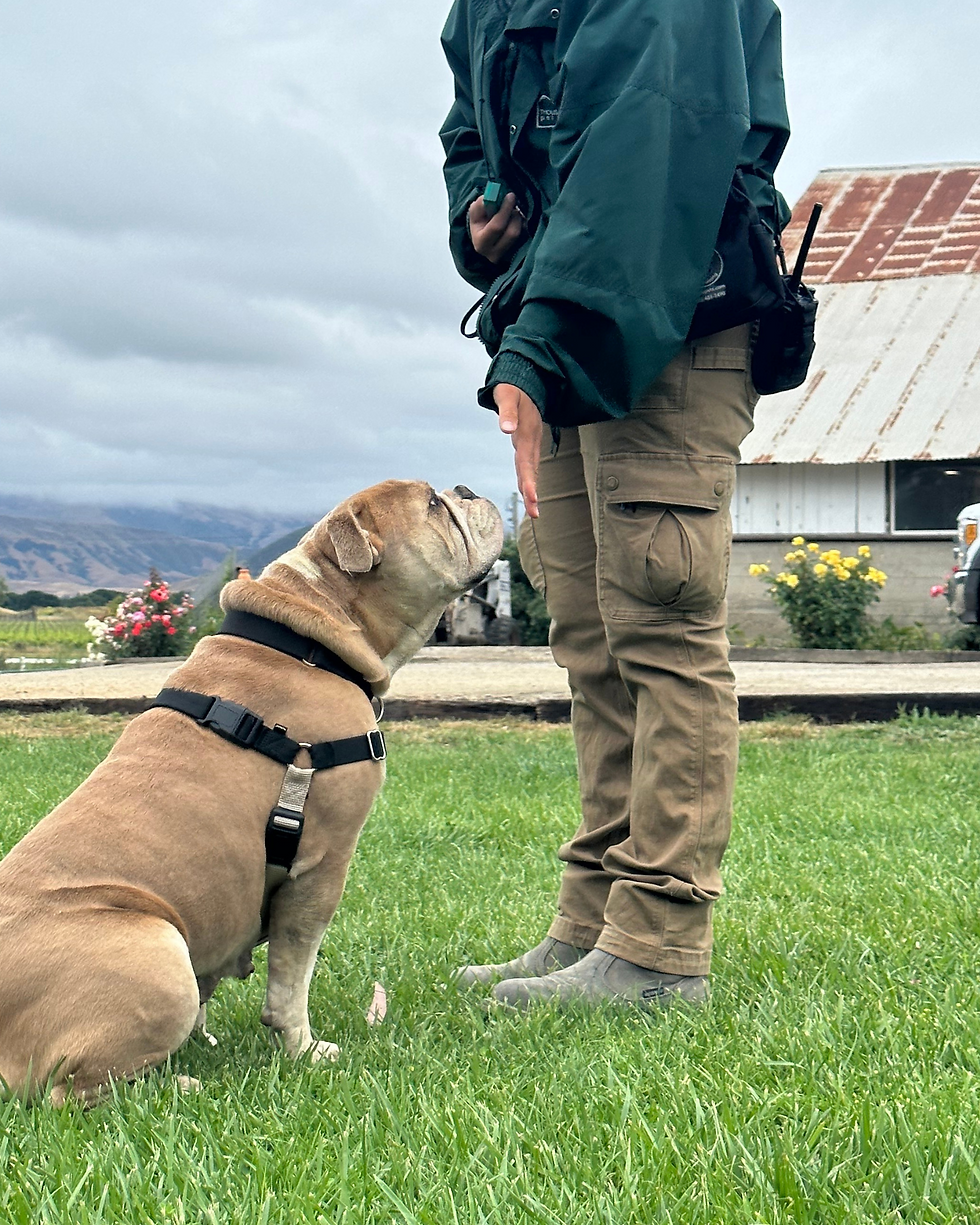The Essential Cues: What Your Dog Actually Needs to Know
- Maddie Angevine

- Apr 23, 2024
- 4 min read
When I got my first dog as an adult, I had dreams of a perfectly trained partner in crime. I wanted her to do everything and go everywhere with me. I spent hours, weeks, and even years teaching her to sit pretty, spin (still her favorite), shake, pray, double high-five, and other super fun but admittedly incredibly unnecessary tricks that she could do when asked. We bonded over learning together, and I cherish every moment of that time now that she is an “old lady.” I don’t regret any of that, but my approach to training with my second dog has been different. I now work full time, have more responsibilities, and still want to sneak in hobbies that (gasp!) don’t necessarily involve my dogs.
Here is the wonderful thing about having your own dog: you can choose to teach them the things that matter to you. The “7 commands in dog training” are not universal. There are way more than seven things you can teach your dog and your dog doesn’t need to know all of them to be a wonderful family member. When I get a dog, or am working with a client, I make a list: Based on your lifestyle, what do you want your dog to be able to do? I prefer to start with my highest priority and work down the list as time permits. Here is a basic list of 7 cues you can teach your dog, and some reasons they may be more helpful in your day-to-day life than what have been traditional commands:
Their Name
No matter what you decide to do with your dog, teaching them that they should respond to their name is the place to start! It helps to grab their attention when you need it, and can start a solid understanding for your pup that engaging with you is rewarding. It is also incredibly helpful if you have more than one dog in the household.
Leave it
The ability to preemptively ask your dog to not engage with something. If I drop a bottle of medication, or a glass shatters in my home, I want to be able to ask my dog to not approach, not try to eat what I’ve dropped, and stay out of harm’s way. It can also be used to keep your dog from approaching people or other animals if it is done well. I often use it to keep my dogs from bothering fishermen on our early morning beach runs.

Recall
Most people say “come!” I want my dogs to have a solid understanding that when I ask them to come back to me, it’s worth it. If you plan to have your dog off-leash, a responsible dog owner will make sure they have a reliable recall. I also use recall around my house, especially at night when it’s time to come inside and go to sleep. I don’t want to have to leave the warmth of my house to go get my dogs, so I call them to me instead.
Off
We like to teach our dogs to get off of a couch or bed on cue. While I love some good snuggle time, with my three dogs totalling over 200lbs, I want to be able to ask them to get off of a spot I’d like to sit in. I feel much nicer asking my dogs to get off of the bed than pushing them off, and that’s the relationship I want to build.

A Place or Mat Behavior.
Most people use this type of cue for dinner time. When we want to sit down for a meal and we don’t want our dog hovering, we can direct them to spend time on their mat instead. It is also a wonderful skill for any dog that will spend time in public places such as coffee shops or pet-friendly restaurants to be able to hang out on their spot, calmly and comfortably. A mat behavior can help teach your dog that when it’s time to take a break, they are able to relax. In addition, this cue is highly recommended for any dog that tries their hand at agility or other dog sports.
Chin Rest
Essentially, I’m teaching my dogs to put their chin in my hand on cue. I use this for all of my dogs when we work on teeth brushing, anytime they require eye drops, or for the pups that need more grooming around their head or face. We can also use it to train a variety of tricks, including a loose leash walk or heel.

Paw / Shake
This is one of the easiest party tricks to teach your dog, but it has some wonderful real-life benefits as well. Being able to have your dog comfortably offer you their paw can build confidence with handling situations such as nail trims or wiping wet feet when it’s rainy outside.
As you embark on your journey of training and bonding with your furry companion, remember that every dog is unique, and so are your priorities. At Gentle Touch Pet Training, we understand that what truly matters is teaching your dog the essential cues that enrich both your lives. Whether it's their name, the vital "leave it," or the comfort of a reliable recall, these cues form the foundation of a strong relationship built on trust and understanding.



